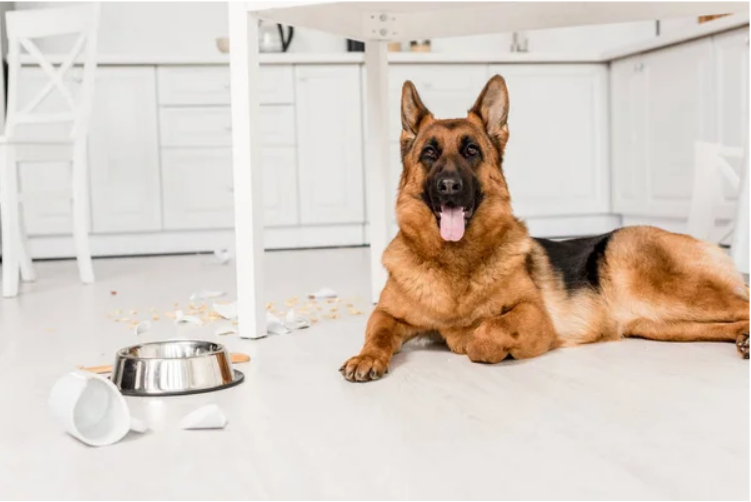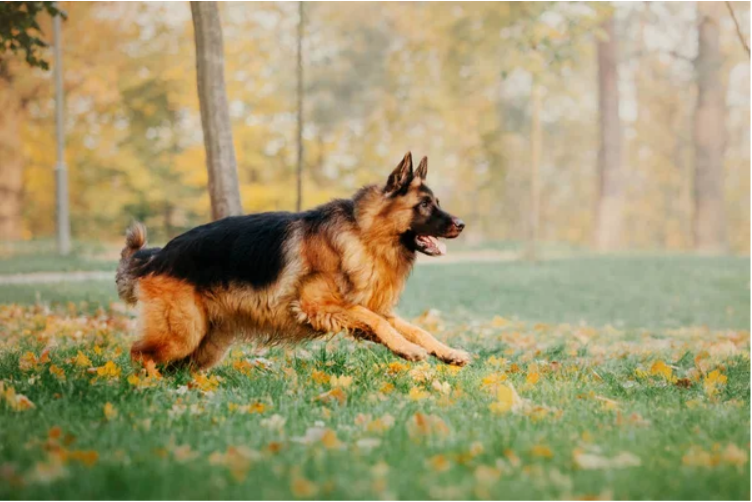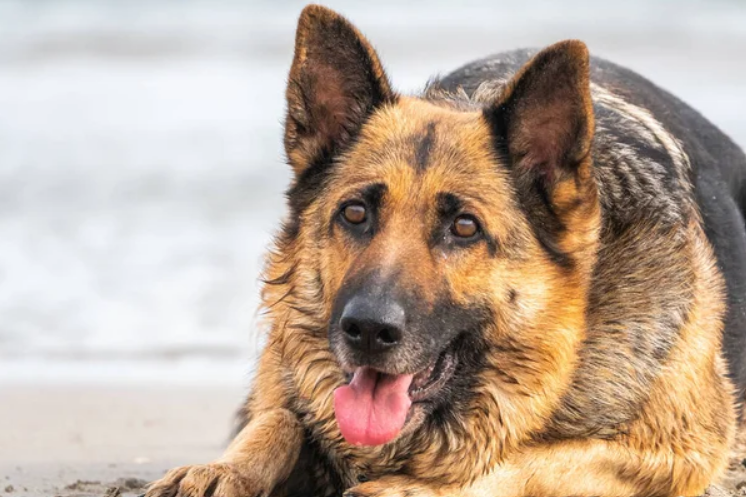
Keeping your family protection dog in top shape is essential for their well-being and effectiveness. Obesity is a common issue that can hinder their performance and overall health. As a responsible owner, it’s important to recognize the risks of obesity and take steps to prevent it. In this guide, we’ll cover the causes, signs, and prevention strategies for obesity in protection dogs, helping your loyal companion stay fit, agile, and ready to protect.
Understanding Canine Obesity
Before delving into prevention strategies, it’s essential to grasp the severity of the obesity epidemic in dogs. Overweight dog problems have become increasingly prevalent in recent years, affecting dogs of all breeds and sizes, including those trained for protection work.
The Impact of Excess Weight on Protection Dogs
Protection dogs, such as German Shepherd protection dogs, require peak physical condition to perform their duties effectively. Excess weight can significantly impair their ability to:
- Respond quickly to potential threats
- Maintain stamina during extended periods of activity
- Navigate obstacles and challenging terrain
- Regulate body temperature efficiently
Health Risks Associated with Canine Obesity
Overweight in dogs isn’t just a matter of reduced performance; it can lead to severe health issues, including:
- Joint problems and arthritis
- Cardiovascular diseases
- Respiratory difficulties
- Increased risk of certain cancers
- Decreased life expectancy
Recognizing the Signs: Is Your Protection Dog Overweight?
Identifying signs your dog is overweight is the first step in addressing the issue. While it may seem obvious, subtle weight gain can often go unnoticed, especially in dogs with thick coats or large frames.
Visual Indicators
- Lack of visible waistline
- Difficulty feeling ribs under a layer of fat
- Abdominal sagging
- Rounded face or loss of neck definition
Behavioral Changes
- Reduced energy levels and enthusiasm for exercise
- Difficulty rising or climbing stairs
- Excessive panting during mild activity
- Reluctance to engage in physical tasks
Common Causes of Weight Gain in Protection Dogs

Understanding what causes rapid weight gain in dogs is crucial for prevention. Several factors can contribute to obesity in protection dogs:
Overfeeding
One of the most common culprits is simply providing too many calories. This can occur through excessive meal portions, too many treats or table scraps, and failure to adjust food intake based on activity level. It’s important to measure portions carefully and resist the temptation to overindulge your dog.
Lack of Exercise
Protection dogs for sale are often high-energy animals, but without proper exercise, they can quickly gain weight. Insufficient physical activity may result from limited space for exercise, busy owner schedules, or reduced training sessions. Ensuring your dog gets regular, vigorous exercise is essential for maintaining a healthy weight.
Medical Conditions
Some health issues can predispose dogs to weight gain. Conditions such as hypothyroidism, Cushing’s disease, and certain medications can slow metabolism or increase appetite. Regular veterinary check-ups can help diagnose and manage these conditions to prevent unnecessary weight gain.
Age and Lifestyle Changes
As dogs age or transition from active duty to retirement, their metabolism and exercise needs change. Failure to adjust their diet and activity levels accordingly can lead to weight gain. Older dogs or those with reduced activity require a carefully balanced diet to maintain a healthy weight.
By understanding these common causes of weight gain, you can take proactive steps to ensure your protection dog stays fit, healthy, and ready to perform their duties.
Preventing Obesity in Your Protection Dog
Now that we understand the risks and causes of obesity, let’s explore strategies to keep your protection dog in optimal shape.
Nutrition: The Foundation of Health
Proper nutrition is the cornerstone of maintaining a healthy weight in protection dogs.
Choosing the Right Diet
Select high-quality, protein-rich dog food appropriate for your dog’s age and activity level. Consider consulting with a veterinary nutritionist to create a tailored meal plan. Avoid foods with excessive fillers or unnecessary carbohydrates.
Portion Control
Use a measuring cup to ensure consistent portion sizes. Adjust food quantities based on your dog’s current weight and activity level. Divide the daily food allowance into multiple smaller meals to boost metabolism.
Treats and Supplements
Limit treats to no more than 10% of daily caloric intake. Choose low-calorie, healthy treats for training rewards. Consider supplements like glucosamine for joint health, especially in larger breeds.
Exercise: Keeping Your Protection Dog Fit and Ready

Regular exercise is essential for maintaining a healthy weight and ensuring your protection dog remains capable of performing its duties.
Daily Physical Activity
Aim for at least 60 minutes of moderate to intense exercise daily. Include a mix of activities such as walks, runs, and playtime. Incorporate training exercises that mimic protection scenarios to maintain skills.
Mental Stimulation
Use puzzle toys and food-dispensing devices to encourage problem-solving. Practice obedience training regularly to keep the mind sharp. Engage in scent work or tracking exercises to tap into natural instincts.
Regular Health Check-ups
Routine veterinary visits are crucial for monitoring your protection dog’s weight and overall health.
Wellness Exams
Schedule bi-annual check-ups for adult dogs, and more frequently for seniors. Discuss any changes in weight, appetite, or behavior with your veterinarian. Conduct regular blood work to detect underlying health issues early.
Weight Monitoring
Weigh your dog at least monthly, recording the results. Use body condition scoring charts to assess your dog’s physique objectively. Adjust diet and exercise plans based on weight trends.
By focusing on proper nutrition, regular exercise, and consistent health check-ups, you can prevent obesity in your protection dog and ensure they remain fit, healthy, and ready to protect.
Socializing Your Protection Dog: A Key to Balanced Health
While not directly related to weight management, socializing your protection dog plays a crucial role in overall health and well-being. A well-socialized dog is less likely to experience stress-related weight gain and more likely to engage in healthy activities.
Benefits of Socialization
- Reduced anxiety and stress-related behaviors
- Increased confidence in various environments
- Better response to commands in distracting situations
- Enhanced ability to distinguish between threats and normal interactions
Special Considerations for Different Protection Dog Breeds
While obesity prevention strategies are generally applicable across all breeds, certain types of protection dogs may have unique needs or predispositions.
German Shepherd Protection Dogs
German Shepherd protection dogs are known for their intelligence, loyalty, and versatility. However, they are also prone to certain health issues that can be exacerbated by excess weight.
Breed-Specific Concerns
- Hip and elbow dysplasia: Maintaining a healthy weight is crucial to reduce stress on joints.
- Bloat (Gastric Dilatation-Volvulus): Proper feeding practices and portion control can help prevent this life-threatening condition.
- Degenerative Myelopathy: Regular exercise can help maintain muscle strength and potentially slow the progression of this neurological disease.
Other Common Protection Dog Breeds
While German Shepherds are popular, other breeds like Rottweilers, Belgian Malinois, and Doberman Pinschers are also frequently used for protection work. Each breed has its own set of health considerations that should be factored into obesity prevention strategies.
Addressing Rapid Weight Gain in Protection Dogs

Sometimes, despite our best efforts, protection dogs may experience sudden weight gain. Understanding what causes rapid weight gain in dogs is crucial for addressing the issue promptly.
Steps to Take When Noticing Rapid Weight Gain
- Schedule an immediate veterinary appointment for a thorough health check.
- Keep a detailed log of your dog’s food intake, exercise, and any changes in behavior.
- Temporarily reduce food portions and increase low-impact exercise, under veterinary guidance.
- Consider switching to a weight management formula recommended by your vet.
Conclusion
Preventing obesity in protection dogs isn’t just about looks—it’s crucial for their health, happiness, and ability to protect. By knowing the causes of weight gain, spotting obesity early, and using effective prevention strategies, we can help our canine guardians stay healthy and active.
Remember, each dog is unique, and what works for one might not work for another. Regular vet check-ups, attentive care, and commitment to your dog’s well-being are key to preventing obesity and its health risks.
As protectors of these incredible animals, it’s our duty to give them the nutrition, exercise, and care they need to thrive. This not only improves their quality of life but also ensures they can continue to protect and be our loyal companions. For more guidance, call Scott’s K9 at 919-939-6003 or email steve@scottsk9.com.